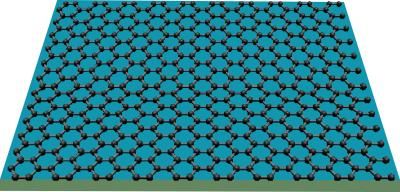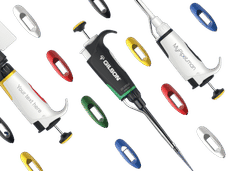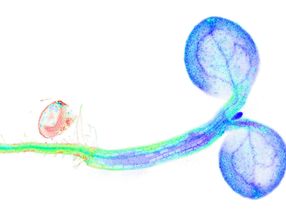Femtogram-level chemical measurements now possible, U. of I. team reports
Finding a simple and convenient technique that combines nanoscale structural measurements and chemical identification has been an elusive goal. With current analytical instruments, spatial resolution is too low, signal-to-noise ratio too poor, sample preparation too complex or sample size too large to be of good service. Now, researchers at the University of Illinois have demonstrated a method for simultaneous structural and chemical characterization of samples at the femtogram level and below.
The measurement technique combines the extraordinary resolution of atomic force microscopy and the excellent chemical identification of infrared spectroscopy.
"We demonstrated that imaging, extraction and chemical analysis of femtogram samples can be achieved using a heated cantilever probe in an atomic force microscope," said William P. King, a Kritzer Faculty Scholar and professor of mechanical engineering. King and colleagues describe the technique in a paper accepted for publication in the journal Analytical Chemistry. The new technique hinges upon a special silicon cantilever probe with an integrated heater-thermometer. The cantilever tip temperature can be precisely controlled over a temperature range of 25 to 1,000 degrees Celsius.
Using the cantilever probe, researchers can selectively image and extract a very small sample of the material to be analyzed. The mass of the sample can be determined by a cantilever resonance technique. To analyze the sample, the heater temperature is raised to slightly above the melting point of the sample material. The material is then analyzed by complementary Raman or Fourier transform infrared spectroscopic imaging, which provides a molecular characterization of samples down to femtogram level in minutes.
"Fourier transform infrared and Raman spectroscopic imaging have become commonplace in the last five to ten years," said Rohit Bhargava, a professor of bioengineering. "Our method combines atomic force microscopy with spectroscopic imaging to provide data that can be rapidly used for spectral analyses for exceptionally small sample sizes."
To clean the tip for reuse, the tip is heated to well above the decomposition temperature of the sample - a technique similar to that used in self-cleaning ovens.
"Since the tip can be heated to 1,000 degrees Celsius, most organic materials can be readily vaporized and removed in this manner," King said.
As a demonstration of the technique, the researchers scanned a piece of paraffin with their probe, and removed a sample for analysis. They then used Raman and Fourier transform infrared spectroscopy to chemically analyze the sample. After analysis, the paraffin was removed by thermal decomposition, allowing reuse of the probe.
"We anticipate this approach will help bridge the gap between nanoscale structural analysis and conventional molecular spectroscopy," King said, "and in a manner widely useful to most analytical laboratories."
Other news from the department science
These products might interest you
Most read news
More news from our other portals
See the theme worlds for related content
Topic World Spectroscopy
Investigation with spectroscopy gives us unique insights into the composition and structure of materials. From UV-Vis spectroscopy to infrared and Raman spectroscopy to fluorescence and atomic absorption spectroscopy, spectroscopy offers us a wide range of analytical techniques to precisely characterize substances. Immerse yourself in the fascinating world of spectroscopy!

Topic World Spectroscopy
Investigation with spectroscopy gives us unique insights into the composition and structure of materials. From UV-Vis spectroscopy to infrared and Raman spectroscopy to fluorescence and atomic absorption spectroscopy, spectroscopy offers us a wide range of analytical techniques to precisely characterize substances. Immerse yourself in the fascinating world of spectroscopy!
























































